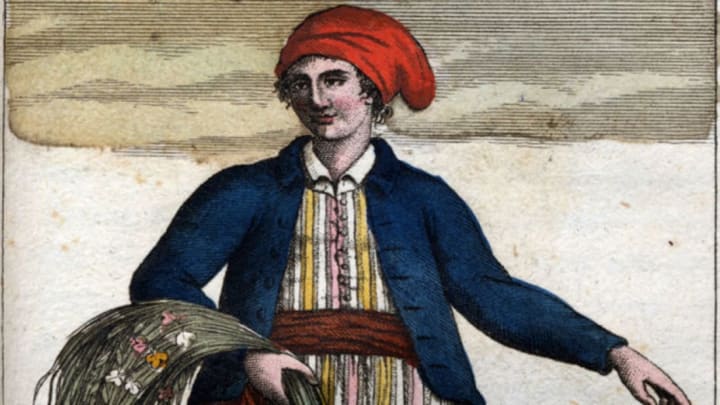Not only a glass-ceiling-shattering explorer, but also a groundbreaking botanist, Jeanne Baret sailed around the world as part of the first French circumnavigation of the globe, led by admiral Louis-Antoine de Bougainville from 1766 to 1769. Her journey was not smooth sailing, however. Because the French Navy did not allow women on their ships, Baret bound her breasts with linen bandages and boarded the Étoile dressed as a man. Jeanne became "Jean" in a masquerade that planted her place in history.
How did a girl from humble beginnings come to such a grand destiny? Born on July 27, 1740, the daughter of a day laborer in the Burgundy region, Baret discovered an early interest in plants. Trained by her family in their identification and medicinal uses, she earned a reputation as an "herb woman," a form of botany self-taught in the peasant class. This won her the attention of a young widowed nobleman and fellow botanist, Dr. Philibert Commerçon.
The couple became colleagues and live-in lovers, though they never married. Two years into their relationship, Commerçon scored the botanist position on the round-the-world French Naval expedition. Then they hatched a plan for getting Baret on board as his assistant. Because of the aforementioned "no girls allowed" rule, the couple decided she would have to live and look like a young man during the years-long journey. The ruse was made easier by Commerçon and Baret sharing a cabin apart from the rest of the crew. Still, the others noticed some strange things about "Jean."
For one thing, Jean never relieved himself in front of the others. And no one could recall ever seeing him undress before his fellows. When eyebrows were raised and tongues began to wag about Jean's curious shyness, Baret concocted a story about having been castrated by some vicious Ottoman Turks. It mollified some of the suspicious for a while. But Baret's true identity would be discovered when the crew reached the South Pacific.
Passed down over centuries, the details of how Jeanne was discovered differ. Most suggest it was the people of Tahiti who recognized Baret as a woman, and identified her as such. One version of the tale suggests a sexual assault at the hands of her crewmates followed, which caused Baret's second documented pregnancy. (Her first predated the expedition, and the child was given up for adoption.) All accounts agree: Her exposure marked the end of the journey for Baret and Commerçon. The pair was dropped off at the French colony of Mauritius shortly thereafter. Over the course of seven years there, Baret had another baby that she gave up for adoption. Commerçon died, and Baret eventually wed a French soldier, who brought her home.
When she stepped back onto the French docks in or around 1775, Baret was a different woman than the girl dressed as a boy who'd departed nearly a decade before. She had seen the world. She had broken boundaries, made discoveries, lost a lover, and found a husband. Though Baret was met with no fanfare, the French government did award her a pension of 200 livres a year for her work gathering plant specimens, even remarking on record that she was an "extraordinary woman." Yet it's only been in recent years that Baret's accomplishments have been explored.
The 1766 expedition netted more than 70 plants, all named after the trip’s lead botanist, Commerçon. He had intended to name a beautiful Madagascar genus after his partner, but died before the paperwork was published. More than 230 years later, historian Glynis Ridley shined a light on this injustice with his book The Discovery of Jeanne Baret. In an interview with Live Science, he admitted, "I don't think she ever expected recognition in her own lifetime, just because women who were involved in science were thought of, at best, as something of an oddity, and, at worst, they were thought of as an abomination."
Nonetheless, Ridley told NPR in 2010: "It would be wonderful if, as a result of the book, somebody wants to name something after Baret again. I think that would be a nice tribute."
About two years later, that very interview inspired biologist Eric Tepe to name a vegetable related to the tomato and potato after Baret: Solanum baretiae. "I have always admired explorers," Tepe explained, "Especially botanical explorers. We know many of their names, and they all have endured hardships in pursuit of interesting plants, but few have sacrificed so much and endured so much as Baret."
Jeanne Baret (also known as Jean Baret or Jeanne Baré or Barret) died on August 5, 1807, at the age of 67.
